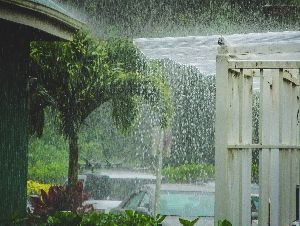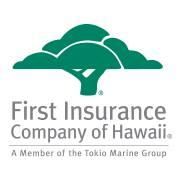Do You Have the Right Insurance for Hawaii Hurricane Season?

Before hurricane season blows into Hawaii, it’s a good time to check your insurance coverages. This measure ensures you’re adequately protected against the risk of possible damage to your home caused by rain, wind, and flooding. The following guide explains the differences between homeowners, flood, and hurricane insurance and how they will protect you in common claims scenarios.
Homeowners Insurance
While homeowners insurance is not demanded by law, mortgage lenders generally require that homeowners have it to maintain coverage. It typically includes four different protections:
- Dwelling coverage for the house.
- Personal property coverage for items inside the home.
- Additional living expenses to help pay for the cost of living in another place while damages caused by a covered loss get repaired.
- Liability insurance in case someone is hurt on your property or harmed by your actions.
Homeowners insurance policies vary in how they respond to perils. Some provide coverage for specifically named perils, while others cover all possible loss causes except those expressly excluded.
Homeowners coverage usually insures damages to the residence caused by wind and rain if the wind speed is less than 74 miles per hour (mph), as determined by the National Weather Service. Damages caused to the residence by wind speeds exceeding 74 mph are generally not covered by homeowners insurance. Separate hurricane insurance would be needed in this situation. In addition, damages to a residence caused by flooding are generally not covered by homeowners insurance. They also require a separate policy.
Flood Insurance

For residential insurance coverage, a flood is defined as an excess of water on normally dry land affecting at least 2 acres on at least two properties. This would include inflow from inland or tidal waters and mudflow. However, flood damages are generally not covered by homeowners insurance. Federally-regulated lenders require this coverage.
Problems usually covered by flood insurance include damage to the building and foundation, air conditioning equipment, appliances, carpeting, installed paneling, blinds, and debris removal. Coverage for items in the basement and cleanup of this area is usually specifically named. You can also purchase content coverage for personal belongings separately.
Flood insurance can be obtained in Hawaii through the National Flood Insurance Program (NFIP), which is underwritten and administered by the federal government. First Insurance Company of Hawaii (FICOH) participates in this program and is the largest writer of this coverage in Hawaii.
Hurricane Insurance
For residential insurance coverage, a hurricane is generally defined as an event resulting in damage caused by wind and rain where wind speeds exceed 73 miles per hour. In Hawaii, hurricane insurance is typically excluded from homeowners insurance policies and must be purchased separately.
Hurricane insurance covers damages due to hurricane speed winds and rain but does not cover those caused by flooding. Some lenders for Hawaii residences can require hurricane insurance. These coverages are distinctive because their deductibles are usually based on a percentage of the total coverage rather than a flat dollar amount.
Don’t wait for the first major storm; secure coverage now by contacting First Insurance Company of Hawaii. With the rising cost of labor and materials, it’s especially important this year. They have more than 110 years of experience serving residents across the state. Call (808) 527-7777 or contact an agent online for additional questions about any of the coverages discussed above.
About the Business
Have a question? Ask the experts!
Send your question

